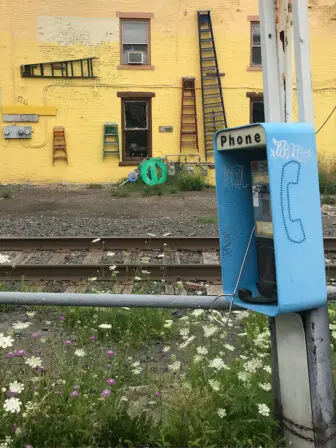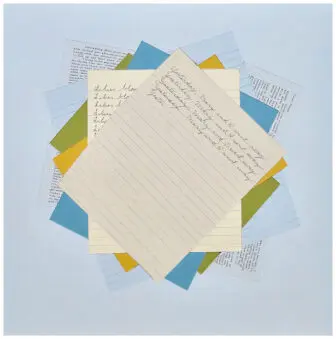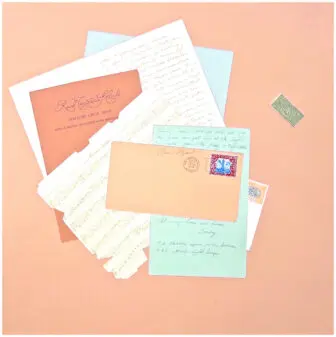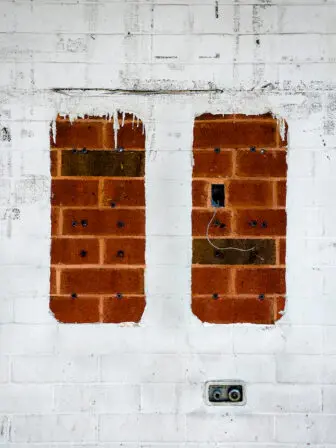Artists examine two antiques: letters and pay phones
In a paired solo exhibit — meaning the work of two artists each occupies half of the Garage Gallery in Beacon — painter Fern Apfel and photographer Amy Becker consider the question, “What is lost?” It opens Aug. 12.
The gallery notes, citing the rapid pace of technological change and “the relentless overwriting of the old with the new,” that culture and economy seem to now depend on “discarding what is for what could be.”
The artwork — trompe-l’oeil paintings featuring handwritten letters by Apfel and Becker’s photographs of pay phones altered by time and place — convey an archival nostalgia while also raising complicated questions about loss.

We asked each artist what drew her to the subject matter.
Fern Apfel: It seems to me that letter-writing — long exchanges where people used to explain and describe things — is becoming more and more rare. It takes a long time to write a meaningful letter, so most people succumb to the quick exchange of text and social media, etc.
I was first drawn to making paintings of envelopes after seeing a book of photographs [Emily Dickinson: Gorgeous Nothings, edited by Marta Werner and Jen Bervin] of the poems Dickinson scribbled on bits of random papers and parts of envelopes. I just thought they were beautiful. I was working on a series of pictures at the time and I found myself morphing into pictures of envelopes.
Working on these, I began to think about communication — what we say to each other, and what we don’t say. The obvious next step was to paint pictures of letters. The work has gone through many stages where I want the envelopes to be anonymous to where I want the specific day and time and the people who wrote the letter identified, so you can actually, if you want to take the time, read the whole letter.

What becomes apparent is how heartfelt these letters are and how much they tell us about the people who wrote them. Our concerns today are sometimes not much different than they were, let’s say, 100 years ago.
I have a letter from the 1800s in which a mother says to her son: “I haven’t seen you in a while; can you come to dinner Sunday night?” That’s not so different from what a mother might text her son these days.
Amy Becker: In the mid-90s, I got my first cellphone. That’s when I began to wonder if I would ever use a pay phone again. Which led me to think that as more people had cellphones, we would need far fewer pay phones. A decade later, I noticed pay phones were gradually being abandoned.

Looking at abandoned pay phones kept reminding me of a play I read in high school called Voice of the Turtle, by John Van Druten. It’s about a young woman in New York City during World War II. I don’t recall much about the play, except she oddly felt sorry for things, like a radio that nobody was listening to. That personification stuck with me as I observed more and more pay phones becoming neglected.
It was around this time I started to photograph them as environmental portraits. And I decided for this series, titled Dead Ringers: Portraits of Abandoned Payphones, to put aside my usual cameras, and instead use my iPhone camera as the means to photograph these remains of the technology it replaced.
Has the notion of communication become devalued in our always-connected world?
Becker: I don’t think communication has become devalued at all. It has evolved and will likely continue to do so. We may not be using handwritten letters and talking on pay phones very much, if at all. Now we communicate most often through texts, emails, social media and yes, phones.
Apfel: The world suffers from authentic communication — as we give in to the quick sound bite, or a “shooting from the hip” remark on social media. There is no pause to think about our words and how they affect others — and even if they are true!

What has been the most surprising question asked of you by a young person who has seen your images?
Apfel: People assume that my paintings are collaged, that I am simply pasting these old letters to my pictures. Each letter or piece of paper is painted with multiple layers of acrylic paint. I do all the actual writing and fine detail work by hand with archival pens.
Becker: One asked, “What’s a collect call?”
Garage Gallery is located in Beacon on North Elm Street, a half-block off Main. See garagegallery.com. The artists have websites at fernapfel.com and amybecker.com. The opening reception for “What is Lost?” is scheduled for 4 to 7 p.m. on Aug. 12 and the show will continue through Aug. 27.

